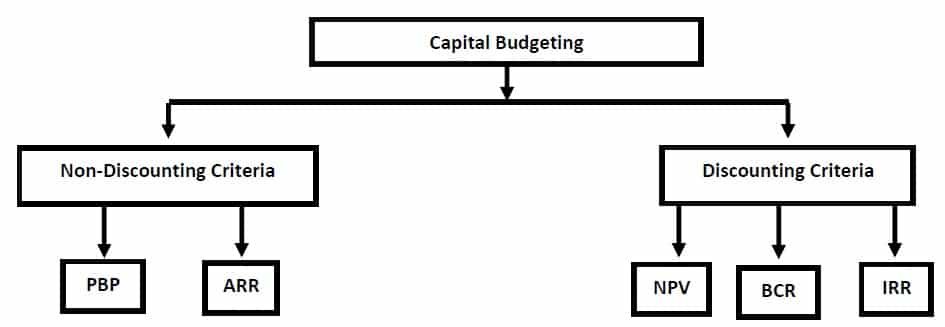Capital Budgeting
Previous Lesson: Risk and Return
Next Lesson: Payback Period
Capital Budgeting is the process of identifying, analyzing and selecting investment project whose returns (Cash Flows) are expected to extend beyond one year.
Capital Budgeting Techniques
There are different methods of evaluating capital investment projects. Broadly, there are two alternative methods of project evaluation and selection used in Capital Budgeting:
Non-Discounting Criteria
Non-discounting techniques take into account magnitude and not timing of the expected cash flow ignoring time value of money. Following are different non-discount techniques:
1. Payback Period
2. Accounting Rate of Return
Discounting Criteria
Discounting cash flow method provide more objective basis for evaluating and selecting projects. This method take into account both magnitude and timing of the expected cash flow in each period of project’s life. Following are some important techniques used under Discounting Criteria:
1. Net Present Value (NPV)
2. Profitability Index (PI) or Benefit Cost Ratio (BCR)
3. Internal Rate of Return (IRR)
>> Practice Capital Budgeting Quiz 1.
Related Topics
Capital Budgeting Problems
Further Readings
References
Financial Management: Theory and Practice, Dr Eugene F Brigham & C Micheal Ehrhardt
Fundamentals of Financial Management: Concise Edition, Brigham Houston
The Economist Guide to Financial Management, John Tennet
Financial Management: Core Concepts, Raymond M Brooks


basic ideas good